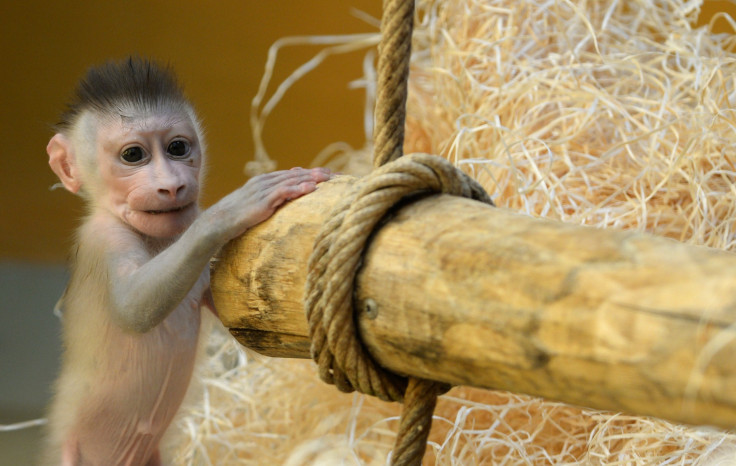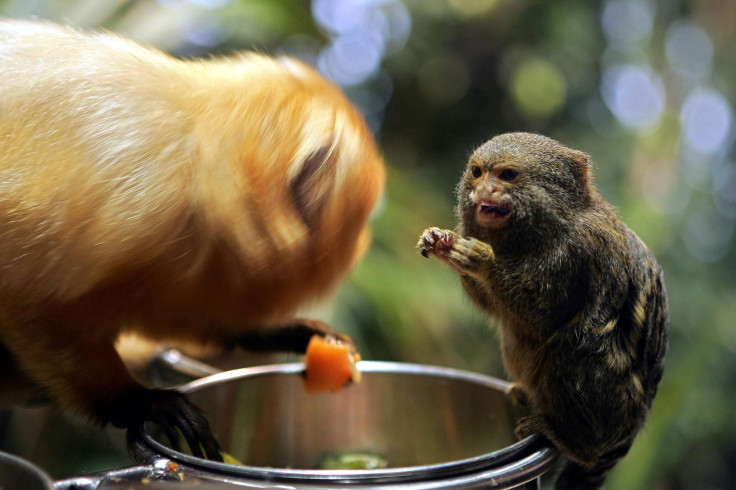World Monkey Day 2015: Cool Facts, Cute Photos And Ways To Support These Intelligent Nonhuman Primates

Are you crazy about monkeys? Then get ready to go bananas because Monday marks World Monkey Day, an unofficial holiday observed around the globe to show love for and spread awareness of these intelligent animals. Although Monkey Day is generally about monkeys, it also celebrates other nonhuman primates such as apes and lemurs. Here are 15 cool facts about monkeys and their relatives, along with cute photos and opportunities to support these lovable critters.
1. A monkey is any primate that is not a human, prosimian (lemurs and other primitive primates) or an ape.
2. There are currently more than 260 known species of monkeys in the world. There are two major types of monkeys: Old World monkeys, which live in Africa and Asia, and New World monkeys, which live in Central and South America. A baboon, for example, is an Old World monkey, while a marmoset is a New World monkey.
3. Old World and New World monkeys make up two of the three groups of simian primates. The third group is apes. Most monkeys have tails, which easily distinguishes them from apes, which don’t have tails.

4. Some monkey species live in trees, while others live on the ground.
5. A group of monkeys is known as a tribe, troop or mission.
6. Monkeys peel their bananas and do not eat the skin. Most eat both plants and animals, and some also eat dirt.
7. Monkeys show affection to others by grooming them, cuddling, holding hands and lip smacking. They express aggression by showing their teeth, yawning, head bobbing and jerking their head and shoulders forward.
8. The pygmy marmoset is the smallest type of monkey, with adults weighing around a quarter of a pound. This New World monkey is native to rainforests of the western Amazon basin.

9. The male mandrill is the largest of all monkeys, measuring almost 3.3 feet long and weighing about 77 pounds. This Old World monkey is extremely colorful and found in southern Cameroon, Gabon, Equatorial Guinea and the Republic of Congo.
10. Spider monkeys get their name from their long, lanky arms and gripping tails that allow them to swing from branch to branch and tree to tree. They are unlike most monkeys, which run across branches.
11. Howler monkeys are the loudest monkeys. Their howls can be heard from about 2 miles away in the forest and 3 miles away in an open area.
12. Capuchin monkeys are considered the smartest New World monkey species. They are skilled tool users, using rocks to smash nuts and branches to capture food. They also use different sounds, such as banging stones together, to alert each other of different types of dangerous predators.

13. Titi monkeys are monogamous, forming a strong bond with their only mating partner. These New World monkeys are the largest group of South American monkeys. The red titi monkey is considered critically endangered.
14. Monkeys are prominent symbols in lore and art of various religions, including Hinduism and Buddhism. They are believed to protect against the evil eye.
15. The monkey ranks ninth of the 12 animals featured in the Chinese zodiac. The next Year of the Monkey is 2016.
Not only is it Monkey Day; it's also the season of giving! Donate to one of these charitable organizations that rescue and care for monkeys and other nonhuman primates.
- Primarily Primates
© Copyright IBTimes 2024. All rights reserved.





















